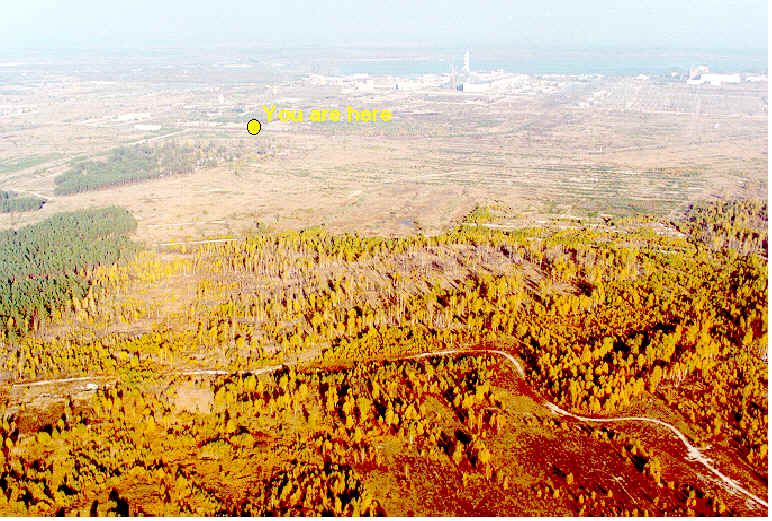Many fairy tales and legends feature a haunted forest. The trees are twisted into grotesque shapes and strange creatures roam there. It appears as if we are on the way to having a real haunted forest in the area around Chernobyl where the environment was heavily contaminated with radiation from the accident that happened there in 1986. A sudden power surge during testing destroyed a reactor causing a huge explosion. No people live in the exclusion zone around the destroyed nuclear power station but plants and animals are still showing the effects of radiation poisoning almost thirty years after the accident. It has been found the brains of birds in around Chernobyl are smaller than normal, fewer insects live in that area, trees are growing slower and big game animals that leave the exclusion zone still have high levels of radiation.
A recent report about the biology around Chernobyl suggests that the organisms that usually decompose organic matter are affected by the high levels of radiation. Natural recyclers such as microbes, fungi and some insects are less capable of consuming and reducing dead organisms. For instance, there is a pine forest near Chernobyl where all the trees turned read and died shortly after the accident. These trees do not seem to be decomposing and there is increasing litter of dead leaves and pine needles on the forest floor. It turns out that the litter is much deeper in areas where the radiation level is highest.
In order to determine whether or not radiation was responsible for the lack of decomposition, the researcher put different types of leaves in mesh bags, some line with a fine mesh to keep insects out. The bags were distributed around Chernobyl in areas with different levels of radiation. After a year, the bags were collected to see what had happened. Where t here was no radiation, most of the leaves disappeared during the year-long test. Where there was a lot of radiation, over fifty percent of the leaves survived for the whole year. Comparing the two sizes of mesh, it was found that microbes and fungi play a much larger role in the decomposition of leaves than insects do. Because the bags had been placed in a lot of different conditions, the researchers were able to eliminate anything other than radiation as the cause of the lack of decomposition.
The researched concluded that it was damage to microbes that resulted in slower or no decomposition around Chernobyl. They also thought that it was probable that the slower return of nutrients to the soil was the cause of slower tree growth.
The dead trees and leaf clutter on the forest floor is also poses an increased risk of wildfires. In addition to the damage usually caused by wildfires, such fires around Chernobyl could cause a redistribution of radioactive contamination as dust and smoke from the fires could escape the exclusion zone. The researchers are collaboration with other scientists in Japan to see if a similar zone lacking microbial life forms around the Fukushima nuclear power plant.
Chernobyl Red Forest:
